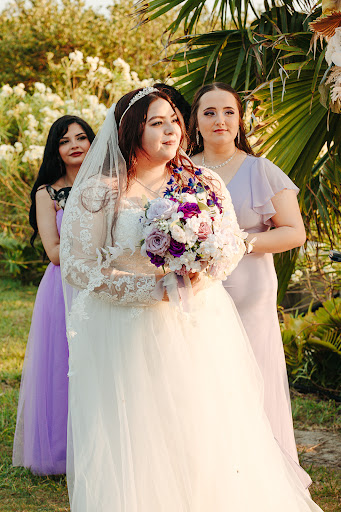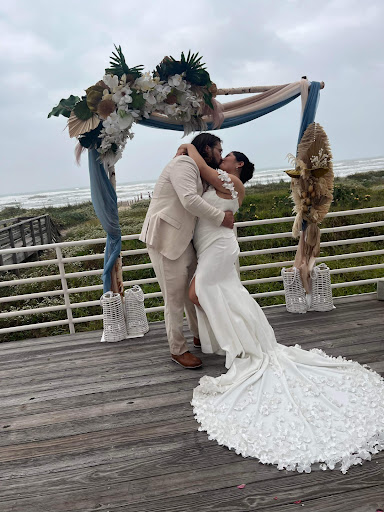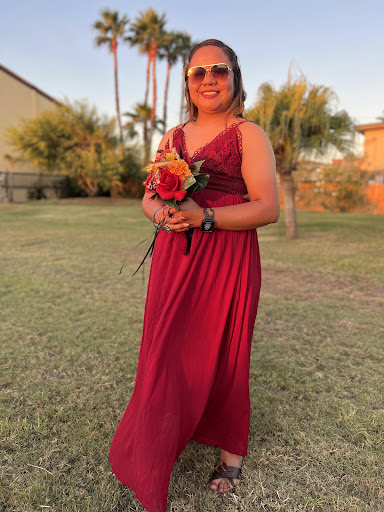Managing Your Guest List for a Micro Wedding
By Weddings By Wendi – Your Texas Hill Country wedding planner
How to Manage Your Guest List for a Micro Wedding: Expert Tips and Planning Guide
Expert Guide to Managing Your Micro Wedding Guest List
Planning the guest list for a micro wedding requires clear priorities, steady communication, and practical tools to convert a long wish list into an intentional, memorable guest experience. This guide teaches engaged couples how to define a micro wedding, choose who belongs in the core circle, trim a larger list with empathy, follow modern etiquette for RSVPs and plus-ones, and use templates and tools to track responses and seating. You will find step-by-step strategies for difficult conversations, sample invitation wording, downloadable template options, and a concise mapping of how guest count affects venue, catering, and vendor choices. Throughout, the focus is on preserving relationships and maximizing guest experience while keeping logistics and budget realistic for small events. Read on for actionable lists, comparison tables, and planner-first tips that will help you finalize a micro wedding guest list with confidence.
What Is a Micro Wedding and Why Is Guest List Management Crucial?
A micro wedding is an intentionally small celebration that typically includes between 20 and 50 guests, designed to prioritize intimacy, experience, and often a reallocation of budget toward quality rather than quantity. This focused guest count changes venue selection, vendor contracts, and the guest experience by allowing more personalized service, upgraded catering or photography, and a shorter, more intentional timeline. Careful guest list management ensures the tone of the day matches your priorities and prevents last-minute compromises that can affect seating, catering minimums, and relationships. The next sections define typical sizes, explain the practical benefits of intimacy, and map how guest count influences core planning decisions.
How Many Guests Typically Attend a Micro Wedding?
Micro weddings most commonly fall in a 20–50 guest range, though elopements and ultra-intimate gatherings can be under 20 while some intimate receptions push slightly above 50 depending on venue flexibility. Factors that push counts up or down include family expectations, cultural norms, venue capacity, and budget priorities; couples dealing with large extended families often use tiered invites or staggered celebrations to manage expectations. Geographic trends and recent preferences for smaller gatherings mean couples now expect better per-guest experiences rather than larger parties. Understanding your likely headcount helps you make early vendor and venue decisions that match both capacity and desired atmosphere.
What Are the Benefits of a Smaller, Intimate Guest List?
Smaller guest lists let couples concentrate on meaningful interactions, higher-quality vendor choices, and reduced logistical complexity in a way that enhances the overall wedding experience. Intimacy increases time spent with each guest and allows budget reallocation to better food, a skilled photographer, or upgraded rentals that elevate the day for everyone present. Operationally, fewer guests mean simpler seating, shorter timelines, and fewer variables for day-of coordination, which reduces stress and contingency planning. These benefits make a small guest list not just an aesthetic choice but a practical planning advantage that reshapes vendor decisions and guest hospitality.
How Does Guest List Size Impact Your Wedding Planning?
Guest count directly impacts venue selection, catering contracts, rental orders, and timeline design because vendors price and allocate resources by headcount and service model. A smaller list may allow plated service or chef’s-table experiences, whereas larger micro weddings might require family-style service to keep costs manageable; likewise, seating configurations and ceremony timing must account for the intimacy and flow desired. Early headcount estimates guide deposit levels, minimums, and what contingencies a day-of coordinator needs to prepare for. Establishing a clear guest target early reduces vendor misunderstandings and keeps the planning process aligned with your priorities.
Who Should You Invite to a Micro Wedding? Defining Your Core Circle
Choosing who to invite to a micro wedding means prioritizing relationships that reflect emotional closeness, ongoing support, and the roles people play in your life. Defining a core circle requires objective criteria, tiered invites to handle overflow, and clear rules around plus-ones and children so you can make consistent, defensible decisions. This section explains practical tests to identify immediate family and closest friends, illustrates how guest-list tiers help operationally with invitations and waitlists, and offers rules-of-thumb for plus-ones and children that reduce ambiguity. Use these guidelines to convert feeling-based choices into repeatable rules.
How to Identify Immediate Family and Closest Friends for Your Guest List
Use specific, repeatable criteria to decide who belongs in the core circle: frequency of contact, role in your relationship or wedding planning, emotional support history, and reciprocation expectations. Ask: Have they been consistently present during major life events? Would excluding them cause lasting hurt or unresolved conflict? Create a short checklist that rates contacts on those criteria, then prioritize anyone scoring highest for the core circle. These objective tests make it easier to communicate decisions and reduce second-guessing when trimming the wider list.
What Are Guest List Tiers and How Do They Help Organize Invitations?
A tier system organizes invites into A, B, and C groups so you can invite in phases, manage waitlists, and set plus-one rules consistently across households. The table below explains common tier rules—who belongs in each tier, typical plus-one allowances, and why each tier matters for RSVP priority.
How to Decide on Plus-Ones and Children for a Small Wedding
Set simple, transparent rules for plus-ones and children—common policies are plus-ones only for partners in committed relationships and children invited only when immediate family members are affected. Communicate these rules clearly on invitations or your wedding website and use consistent language to avoid confusion. Consider exceptions sparingly and document any granted exceptions to keep the process fair. These rules protect your headcount target and preserve the intimate atmosphere you’ve chosen.
How Do You Cut Your Wedding Guest List for a Small Wedding? Practical Strategies and Emotional Guidance
Trimming a guest list combines practical rules and empathetic communication; the objective is to apply consistent filters, offer alternatives to excluded guests, and prepare for emotional responses without sacrificing relationships. Begin by establishing objective constraints—budget, venue capacity, and a maximum headcount—and apply tiered invitations and plus-one policies uniformly. This section provides step-by-step tactics for polite reduction, scripts for difficult conversations, and strategies to manage the emotional weight of saying no while preserving long-term connections.
What Are Effective Tips for Politely Reducing Your Guest List?
Use clear, predefined rules and a stepwise approach to reduce bias and emotional decision-making. Start by setting an absolute headcount and reasoning before reviewing names. Apply objective filters (family, closeness, contribution), then move through tiers and create a waitlist for declined invitations. Offer excluded guests thoughtful alternatives such as a later celebration, livestream participation, or a personal lunch with the couple. These measures reduce hurt feelings while retaining dignity for both sides.
- Set a firm headcount and reasoning before reviewing names.
- Apply objective filters (family, closeness, contribution).
- Create a waitlist and offer alternatives to those not invited.
How to Handle Difficult Conversations When Uninviting Guests
Approach uninviting with kindness, clarity, and a brief explanation rooted in constraints rather than personal judgment; use “we” language and stress capacity limits rather than interpersonal failings. For phone conversations, prepare a short script; for sensitive family situations, consider having a parent or mediator assist with the explanation. Offer alternatives such as celebrating together after the wedding or including them in a smaller follow-up event. When conversations escalate, pause, reiterate the constraints, and involve a trusted third party if needed to preserve relationships.
- Phone script example: “We’ve had to limit our guest list due to venue capacity and want to honor our immediate family and closest friends. We hope you understand and would love to celebrate together another time.”
- Email script should be brief, empathetic, and offer alternatives.
- If tensions rise, defer to a private conversation and restate the logistical reasons.
What Are Common Emotional Challenges and How to Overcome Them?
Couples commonly report guilt, fear of offending people, and pressure from family when downsizing guest lists; acknowledging these feelings is the first step toward resolving them constructively. Reframe the choice as prioritizing meaningful experiences rather than exclusion, and remind stakeholders that smaller events often lead to better hospitality for those invited. Use a planner or trusted friend as an accountability partner who can help enforce rules and mediate sensitive conversations. These practical supports reduce emotional burden and keep planning focused on what matters most.
What Are the Etiquette Rules for a Micro Wedding Guest List?
Etiquette for micro weddings emphasizes clarity, fairness, and respectful communication so guests understand constraints without feeling personally rejected. Proper wording, RSVP timelines, and private conversations with family about sensitive dynamics are central to maintaining harmony. This section provides sample invitation lines, recommended RSVP practices, and guidelines for managing complex family situations with tact. Following these etiquette rules preserves relationships while keeping planning manageable.
How to Word Invitations for an Intimate Wedding
Choose direct, gracious wording that reflects your tone and states limitations clearly—formal phrasing works for traditional couples, while casual language fits relaxed events; in both, be explicit about partner or child policies. Use your invitation and a linked wedding website (if used) to elaborate on constraints and alternatives. Sample wording options below show varied tones and where to place restrictions succinctly and kindly.
- Formal sample: “Due to limited capacity, we request the pleasure of the company of [Name] only.”
- Casual sample: “We’re keeping this celebration small—please RSVP for the invited guest named.”
- Family-only sample: “Immediate family and close friends are invited due to venue size.”
What Is Proper Micro Wedding RSVP and Communication Etiquette?
Set a firm RSVP deadline 3–6 weeks before the event and use a reliable tracking method to follow up with non-responders; clearly state RSVP instructions on the invite and follow up personally for critical guests. For last-minute declines, have a waitlist process and be prepared to reassign seats quickly; use a coordinator or designated family member to help ensure accurate final counts. These practices reduce last-minute stress and give vendors time to adjust headcount-dependent services.
- Recommended timeline: RSVP deadline 4 weeks prior; final headcount 2–3 weeks prior.
- Follow-up method: gentle personal call or message for non-responsive A-tier guests.
- Reassignment: use your tiered waitlist to fill declines promptly.
How to Manage Family Dynamics and Sensitive Guest Situations
Address family expectations privately and early, explaining the constraints and your priorities; when parents or family members request additional invites, listen empathetically but reaffirm the chosen rules and offer alternatives. For divorced or blended families, invite per-household rather than per-parent to minimize conflict, and communicate privately to each stakeholder. If tensions persist, involve a planner or mediator who can neutrally explain constraints and maintain boundaries; documenting decisions reduces repeated negotiation.
- Use private conversations rather than public announcements.
- Offer a small post-wedding celebration if adjustments are requested.
- Involving a planner can preserve relationships while enforcing consistent rules.
Which Tools and Templates Can Help You Manage Your Micro Wedding Guest List?
Using the right tools simplifies RSVP tracking, seating, and communication; for micro weddings, lightweight spreadsheets plus a simple RSVP tracker often outperform overly complex event software. Look for tools that support guest tagging, plus-one fields, meal choices, and quick filters so you can generate final counts and seating lists efficiently. Below are recommended digital options and how to use a guest-list template, followed by information on obtaining a customizable planner suited for small events.
What Are the Best Digital Tools and Software for Guest List Management?
Select solutions that offer simple tagging, plus-one handling, RSVP status, and meal-choice fields rather than bloated features you won’t use for a small guest list. For many micro weddings, a well-structured spreadsheet with filters and pivot tables is sufficient; for those who want automated RSVPs, choose software with guest grouping and exportable reports. Planners typically use a combination of a master spreadsheet for tracking and a lightweight RSVP form to collect online responses and dietary needs.
- Best for RSVP tracking: apps with automated reminders and export features.
- Best free option: structured spreadsheet template with built-in filters.
- Best for seating: simple seating-chart tools that drag-and-drop names into tables.
How to Use a Guest List Template to Organize Invitations and RSVPs
A robust guest list template should include essential columns—guest name, household, relationship, tier, invite status, RSVP received, meal choice, plus-one details, and notes—to track progress from invite to attendance. Use filters to produce final headcount, meal counts, and seating groups, and maintain a “finalized” column for the day-of coordinator. Update the master file weekly early in planning and daily during final countdown; export a clean copy for vendors that includes only confirmed attendees and meal selections.
- Essential columns: name, relationship, tier, invite status, RSVP, meal, notes.
- Workflow: Invite → Track RSVPs → Confirm final count → Generate seating.
- Day-of use: provide coordinator with an attendee list and any special notes.
Where to Download a Free Micro Wedding Guest List Planner
For couples who want a ready-made, micro-wedding-focused planner, Weddings By Wendi offers a customizable guest list template and guidance to set up RSVP tracking and seating charts; request the template or ask for customization during a consultation. The downloadable planner includes columns for tiers, plus-one tracking, meal choices, RSVP deadlines, and a simple seating layout that adapts to small venues. If you prefer hands-off setup and day-of management, mention your needs during a consultation to have the template tailored and populated with your initial guest data.
How Does Your Guest List Affect Venue and Vendor Choices for a Micro Wedding?
Guest count is the central variable that ties venue selection, catering style, rentals, and day-of staffing together because each vendor adapts operations and pricing around confirmed attendance. A smaller guest list opens up nontraditional venues and flexible seating arrangements, allows per-guest upgrades, and can reduce overall rental quantities while still requiring careful attention to minimums and service style. This section gives practical rules-of-thumb for matching guest count to venue and vendor decisions, plus a table showing common vendor dependencies on guest numbers.
How to Choose a Venue Based on Your Micro Wedding Guest List Size
Match your headcount to venue capacity with a conservative buffer for seating comfort and flow; for seated dinners, plan at least 10 square feet per guest plus dedicated ceremony space. Small guest lists work well in galleries, restaurants, private gardens, and boutique inns where intimate layouts enhance conversation and service. Consider accessibility, restrooms, and vendor loading when evaluating spaces that look perfect for a small crowd, and confirm how the venue handles outside vendors and service timelines.
- Rule of thumb: 10–12 sq ft per seated guest for comfortable layouts.
- Nontraditional spaces: restaurants and short-term rentals often offer intimacy but check service logistics.
- Local considerations: ask about local venue restrictions and what’s included with rental.
How Does Guest Count Influence Catering and Rental Needs?
Catering typically prices per plate, so smaller guest lists increase per-guest spend but allow higher quality or plated service; some caterers impose minimums that affect cost-efficiency for very small events. For rentals, reduce table and chair counts proportionally and choose styles that support an intimate experience—round tables for conversation or single long tables for communal dining. Consider service style trade-offs: family-style or plated service may be better for micro weddings because they improve guest experience and reduce waste with precision counts.
How Can Day-Of Coordination Support Your Small Guest List?
A day-of coordinator streamlines arrivals, oversees vendor timing, and ensures seating and timeline flow match the intimate tone, freeing the couple to enjoy the event. Coordinators for micro weddings focus on hospitality details—greeting guests, managing last-minute RSVPs, directing seating, and troubleshooting vendor adjustments—while keeping the schedule tight and personalized. For small events, the coordinator’s role often includes on-the-spot guest-list adjustments and liaison work that prevents minor issues from interrupting the ceremony.
- Coordinator duties: guest arrival, vendor liaison, timing adjustments.
- Benefit: reduces couple’s stress and handles last-minute guest changes.
- Result: consistent guest experience and smoother transitions between ceremony and reception.
How Can Weddings By Wendi Help You Manage Your Micro Wedding Guest List?
Weddings By Wendi is a full-service wedding and event planning company serving Central Texas, including Austin, San Marcos, Dripping Springs, and South Padre Island, with experience in micro weddings and day-of coordination. For couples who want hands-on support, Weddings By Wendi offers guest-list curation, RSVP tracking setup, customized templates, seating-chart creation, and day-of management that keeps your intimate guest experience smooth and personal. The following bullets summarize services focused specifically on guest-list needs and what to expect when you request planner support.
- Guest-list curation: Assistance applying objective criteria and tiers to prioritize invites and manage family conversations.
- Template customization and RSVP tracking: A tailored guest list planner configured for your event’s rules and plus-one policies.
- Seating charts and day-of guest management: Finalized seating maps and on-site guest handling to ensure a calm, welcoming day.
What Guest List Management Services Does Weddings By Wendi Offer?
Weddings By Wendi provides targeted support that includes hands-on curation of your guest list, customization of the downloadable template for your event, RSVP monitoring, and seating chart preparation that matches venue layout to your confirmed attendees. The planner works with your tier system to send phased invites, manages waitlists, and produces vendor-ready final counts and meal breakdowns. This service package streamlines the most time-consuming administrative tasks while preserving fairness and clarity in guest communications.
How Does Day-Of Coordination Ensure Smooth Guest Experiences?
Day-of coordination from Weddings By Wendi ensures guests are greeted and seated according to plan, vendors are coordinated against the timeline, and last-minute changes are handled discreetly to preserve the atmosphere. Coordinators manage vendor arrivals, oversee ceremony timing, and assist with hospitality issues such as dietary accommodations or seating swaps. By taking responsibility for these details, coordinators let the couple be present and enjoy meaningful moments with their smaller guest list.
How to Schedule a Personalized Micro Wedding Guest List Consultation
To schedule a personalized consultation with Weddings By Wendi, prepare a preliminary guest list and your preferred headcount, outline any family considerations, and bring notes on the venues you’re considering; the consultation will focus on curation rules, template setup, and a day-of plan tailored to your guest experience goals. Expect the planner to ask about priorities—intimacy, upgraded vendors, or family expectations—and to propose a phased invitation strategy and template customization accordingly. This consultation is the practical next step for couples who want professional help turning a wish list into a confident, curated guest list.
- What to bring: preliminary guest names, family dynamics notes, venue choices.
- Deliverables: customized guest-list template, invite timeline, and day-of checklist.
- Outcome: a clear plan to finalize invites and manage RSVPs with professional support.
Frequently Asked Questions
What Should You Consider When Creating a Micro Wedding Guest List?
When creating a micro wedding guest list, consider the emotional significance of each guest, your budget, and the venue’s capacity. Prioritize those who have played a significant role in your life and relationship. Additionally, think about the dynamics of your family and friends, as well as any cultural or social expectations that may influence your decisions. Establishing clear criteria for inclusion can help streamline the process and ensure that your guest list reflects your values and priorities.
How Can You Communicate Guest List Decisions to Family and Friends?
Communicating guest list decisions requires sensitivity and clarity. Start by explaining the reasons behind your choices, such as venue capacity or budget constraints. Use direct but kind language, and consider having one-on-one conversations with those who may feel hurt by the exclusions. Offering alternatives, like a post-wedding celebration or virtual participation, can help ease disappointment. Being transparent about your priorities will foster understanding and maintain relationships, even if some guests cannot be included.
What Are Some Creative Alternatives for Guests Who Can’t Attend?
If certain guests cannot attend your micro wedding, consider creative alternatives to include them in your celebration. Options include live streaming the ceremony, sending personalized video messages, or hosting a virtual toast. You could also plan a small gathering or dinner with those who were unable to attend at a later date. These gestures show that you value their presence and want to share your special day, even if they can’t be there in person.
How Can You Handle Last-Minute Guest List Changes?
Handling last-minute guest list changes can be stressful, but having a plan in place can ease the process. Maintain a tiered guest list to quickly identify who can be invited if someone declines. Communicate promptly with any new guests, providing them with all necessary details. If changes occur close to the wedding date, ensure that your vendors are informed to adjust seating and catering as needed. Flexibility and clear communication are key to managing these changes smoothly.
What Are the Best Practices for RSVP Tracking?
Effective RSVP tracking is crucial for managing your micro wedding guest list. Set a clear RSVP deadline, ideally 3-6 weeks before the event, and use a reliable method to track responses, such as a spreadsheet or dedicated RSVP software. Follow up with guests who haven’t responded, especially those in your core circle. Keeping a waitlist can also help fill any last-minute spots. This organized approach ensures you have an accurate headcount for catering and seating arrangements.
How Can You Ensure a Positive Experience for Your Guests?
To ensure a positive experience for your guests, focus on personalized hospitality and clear communication. Provide detailed information about the event, including venue logistics, dress code, and any special accommodations. Consider small touches, like welcome bags or personalized notes, to make guests feel valued. During the event, ensure that guests are greeted warmly and that their needs are attended to promptly. A thoughtful approach to guest experience will leave a lasting impression and enhance the intimacy of your micro wedding.
What Should You Do If Guests Feel Hurt by Exclusions?
If guests express hurt feelings due to exclusions from your micro wedding, approach the situation with empathy and understanding. Acknowledge their feelings and explain the constraints you faced, such as budget or venue limitations. Offer alternatives, like a post-wedding gathering or a personal catch-up, to show that you still value their relationship. Maintaining open lines of communication and being honest about your decisions can help mitigate hurt feelings and preserve important relationships.








































